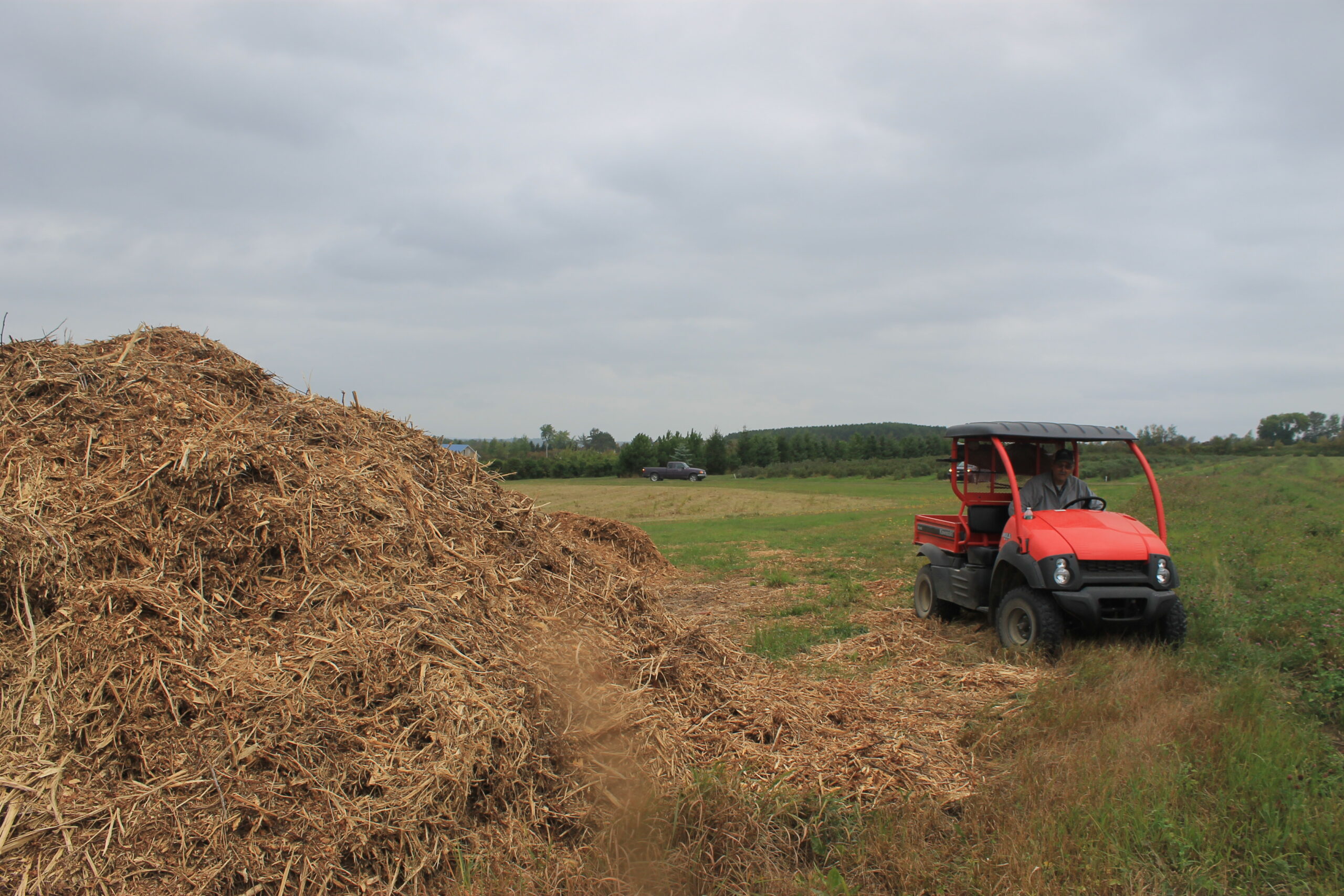
Wood chips are a locally available forestry product and have quite a few uses in farms and home gardens, especially in dry summers.
From conserving water to promoting beneficial mycorrhizal fungi growth, mulch from fresh cut trees and brush can be a good approach for large and small growers of many plants.
Like any other solution, wood chips are nuanced and can create their own problems.
“It is what it is. You have to be careful,” said Sam Blackstone of Circle B Farms in Caribou, who uses different types of wood chips as a mulch for blueberries, apples and other perennial crops.
Blackstone uses wood chips from evergreen trees on blueberry plants to help suppress weeds, maintain soil acidity and increase the effectiveness of irrigation lines. It’s best to avoid cedar in the mix because it attracts ants and has too many tannins, Blackstone noted.
For many perennials, including raspberries and fruit trees, chips from hardwood, deciduous trees are ideal. They help conserve water, and mimic forest ecosystems in promoting beneficial fungal connections with the root systems, according to Michael Phillips, owner of the Lost Nation organic apple orchard in New Hampshire and author of “Mycorrhizal Planet: How Symbiotic Fungi Work with Roots to Support Plant Health and Build Soil Fertility.”
Phillips’ new book tells the story of mycorrhizal fungi, a group of fungi that support the root systems of more than 90 percent of the plants on earth, and offers practical tips for farmers and gardeners.
Among hardwood chips for mulching, the best would be “ramial” wood chips, from stems and branches under 3 inches in diameter — the most nutrient-dense parts of the trees, according to Phillips.
Ramial wood chips, like hardwood chips, promote mycorrhizal growth but also provide the soil with more organic matter and available nitrogen, phosphorus, potassium, calcium, and magnesium over a shorter timeline, according to Phillips. Regular wood chips are heavier in carbon and take longer to break down.
While ramial wood chips are ideal, Phillips is a proponent of mulching fruit trees in general with available natural materials — hardwood wood chips, mowed cover crops, wildflowers and raspberry prunings
With access to a wood chipper, landowners can easily make their own ramial wood chips or chip mixes.
A free and less time-consuming source of wood chips can be brush and tree cuttings from companies like Asplundh, which maintains power line clearings in many areas.
Those companies can deliver their cuttings for free, depending on where they’re operating, said Blackstone, who has taken large loads from Asplundh when they’re working nearby. He stores it to let it break down and uses it as needs arise.
Blackstone also has purchased softwood and hardwood chips from local outfits. Paper-grade hardwood chips can go for around $750 a large truck load of about 80 cubic feet from companies like Frontier Trucking run by Kevin Bouchard of Fort Fairfield, from whom Blackstone has purchased.
There are a few pitfalls to avoid with wood and brush chip mulch. It’s important to not mulch within three to six inches of the trunk of a bush or tree, to avoid drawing rodents or aggressive weeds.
“The problem with this is, you never know what you’re going to get for weed seeds,” Blackstone said.
For instance, the leguminous cover crop vetch can proliferate out of brush mulch and possibly overtake a newly planted blueberry plant, Blackstone said.
“It depends on the time of year. If it’s early, immature stuff in the wood chips, then you won’t have too many weed problems.”




